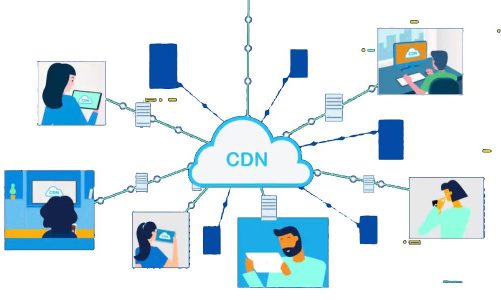Table of Contents
Introduction
Migrating to the cloud can be a daunting task for any business. This is an issue that affects many companies, whether it’s a small start-up or a large multinational company. But there are many advantages to migrating to cloud that will result in increased productivity, reduced costs and better security. Many companies are turning to the cloud as it is more efficient and less troublesome than legacy infrastructures.
In this blog post, we’re going to be talking about the importance of migrating from on-premise servers to a cloud environment. We’ll discuss what these terms mean and why they are so important for businesses today
What Is Cloud Migration?
Cloud migration refers to the process of transitioning company data, digital assets, services, IT resources, and applications from an on-premise local server or private cloud environment to one that is hosted in the public cloud, usually within a data center or co-location facility. Moving from one cloud platform to another is also a type of cloud migration.
Whether transitioning from physical on-premise servers to cloud-based servers or moving between different cloud platforms like AWS, Azure, or Google Cloud, this process necessitates detailed planning, execution, and oversight. When seeking expert assistance for server migration, solutions try to find specialized support, for example, server migration with Dataknox. It offers tailored services to streamline and movement of vital data and applications, ensuring minimal disruptions and optimal efficiency.
How Does It Work And What Are The Types Of Cloud Migration?
A business needs to consider two factors when it comes to choosing the cloud migration strategy which works best for it. First, the deployment model, if it will be a public cloud, private cloud, hybrid cloud or a multi-cloud. The second factor is the service category, ie, businesses have the option to choose SaaS (Software as a Service), PaaS (Platform as a Service) or IaaS (Infrastructure as a Service) as per their needs.
Migrating data, digital assets, services, IT resources and applications can be achieved with different levels of complexity. There is also a range of options and types of cloud migration to consider.
- Lift and shift: Also known as rehosting, this is the simplest type of cloud migration, where you move your infrastructure to a public cloud without modifying any code. The term “lift and shift” means that you lift all your current data into the cloud, then simply shift it from your existing equipment onto your new cloud platform. This type of migration carries least dependencies, minimum business impact and zero regulatory constraints.
- Re-Platforming: In this category, you move your assets to an operating system based on CNaaS Platform Standards. This reduced your operational expenses as the total number of enterprises supported platforms goes down.
- Re-Factoring: In this method, businesses redo the applications to conform to the standards, security needs and functionality of the new system. For example, Java, .Net and other updates.
The Benefits Of Migrating To The Cloud
Migrating to the cloud provides a number of benefits for your business, both in the short and long term.
- Enhanced security: When you migrate your IT infrastructure to the cloud, you shift the majority of the responsibility to your cloud service provider. They are responsible for ensuring that cyber-attacks don’t lead to data leakage or any other security issues that could impact your business. That means that it’s no longer your concern if there is a breach in your network, as this will be taken care of by the experts at your cloud service provider.
- Improved ROI: migrating to the cloud will immediately increase your ROI. This is because you’re eliminating on-premise security and server hardware costs, as well as reducing IT staff expenditures.
- Scalability: this is a huge benefit of moving to the cloud. If your business grows, your infrastructure needs to grow with it. Cloud migration allows you to scale up or down as needed so that your company can continue to operate smoothly no matter the state of the economy.
- Improved network performance: an issue that many businesses face is latency—this is when there are significant delays in data transmission and response times. Migrating your infrastructure to the cloud improves latency by reducing the distance between your company and its cloud service provider.
- Better user experience: think of the multi-device experience that many of us are used to in our daily lives. Everything is available to us at any time, on multiple devices – this includes email, websites, apps, and more. By migrating your infrastructure to the cloud, your employees will be able to work in the same way, regardless of where they are or what devices they prefer.
Challenges Faced By Businesses When They Migrate To The Cloud
Companies that are considering migrating their IT infrastructure or making the switch to the cloud may face the following challenges:
- What to do with your legacy applications: As every legacy software is built different, it is crucial to figure out which applications you plan to keep, which ones to migrate to the cloud, and which ones to trash and rebuild so as to get maximum efficiency out of the cloud.
- Modernizing Your Applications: For the applications you wish to rebuild, you need to consider what are your options to do so to maintain optimum performance by migrating to cloud.
- Deciding Upon Cloud Management: After migrating to the cloud, you need to figure out how do you plan to manage the new cloud system and who are the people responsible for it.
- Key dependencies: Businesses must first address critical infrastructure and application dependencies to lower risk, save time and money. This can be done by prioritizing applications and identifying necessary remediation.
- Complexity of migrating: Understand the intricacy you’ll encounter when switching and account for the time it will take to complete the cloud migration.
- Stakeholders and Business support: It’s critical to involve stakeholders across the organization in order to migrate successfully.
Summary – Key Takeaways
- Cloud migration can impact businesses in many ways, including how your employees work and the level of complexity involved.
- There are several cloud migration options to consider, each with their own benefits and challenges.
- Some of the most common challenges faced by companies when migrating to the cloud include legacy applications, modernizing existing applications, figuring out new cloud management, and more.
Also Read: PERFORMANCE BUSINESS DEVELOPMENT STRATEGY



